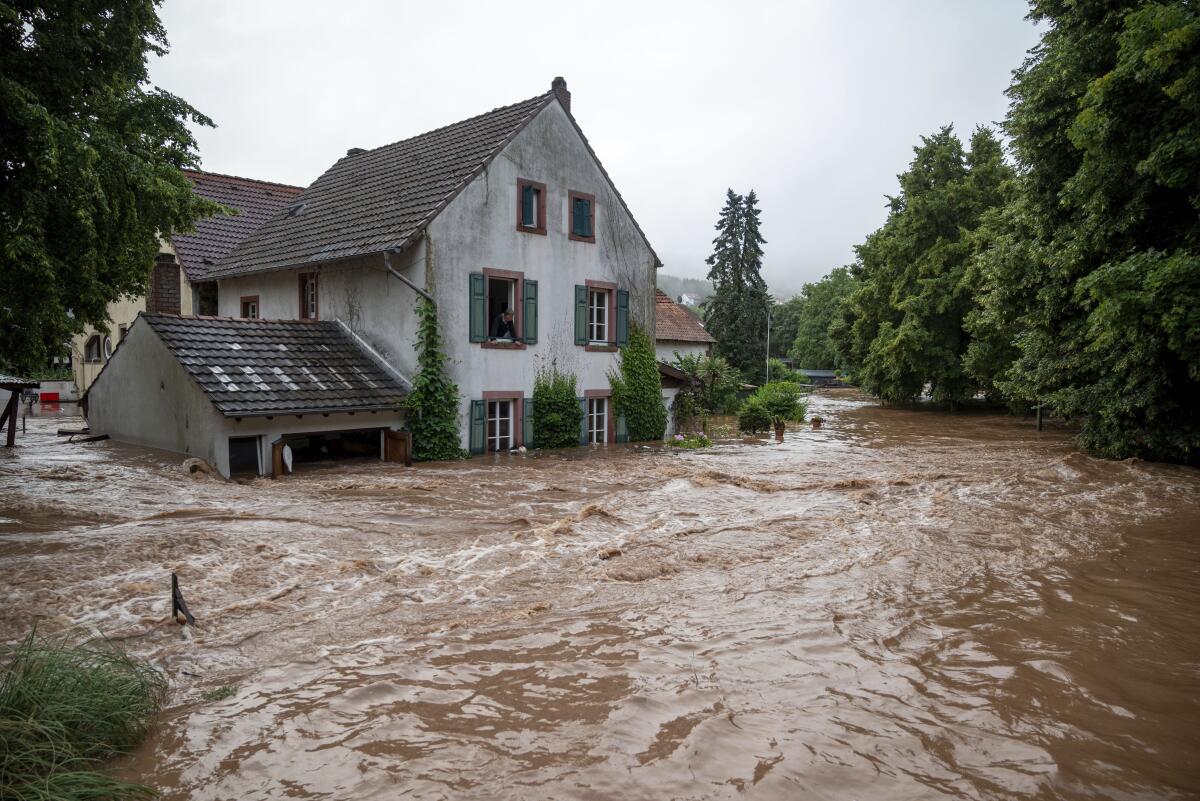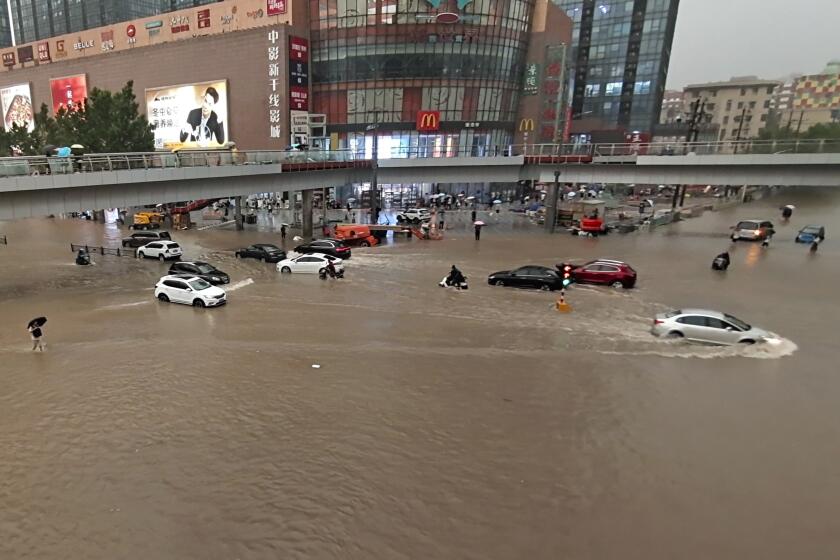Op-Ed: Heat waves, wildfires, floods — what’s with all the extreme weather?

- Share via
Reading the news over the past month — or maybe just stepping outside — you could get the sense that something has gone wrong with the weather. One heat wave after another has struck the West Coast, which, as a result, is now on fire. Western Europe has been deluged by rain, killing hundreds. Across Asia, from Japan to Turkey, temperature records have been falling like dominoes, and, most recently, several cities in China have been flooded by heavy rainfall.
The question on everyone’s mind is whether this confluence of catastrophes is being caused by climate change. On one level the answer is a clear yes: Climate change puts more heat into the atmosphere, which directly causes high temperatures and indirectly increases the intensity of rainstorms by allowing air to hold more water vapor. But the approximately two-degree Fahrenheit increase in global average surface temperature caused by climate change so far represents only a relatively minor part of any single event. If Portland had reached 114 degrees at the end of June rather than 116, it would still have been the hottest day in the city’s history. If Western Germany had received 7% less rain (that is, if we subtract out the additional moisture the atmosphere can currently hold thanks to climate change), it would still have experienced more than a month’s worth of rainfall in a single day.
In fact, the true driving force behind all this extreme weather is the same: The behavior of the jet stream. The jet stream is the large band of strong wind that makes your flight from the U.S. to London shorter (and the return trip longer), and it plays a crucial role in determining the weather of the Northern Hemisphere. For one, it serves as something of a dividing line between two major air masses: the hot, wet air of the tropics and the cold, dry air of the Arctic.
When the jet stream bends toward Texas, temperatures in the U.S. fall as cold air is allowed to rush south. The reverse occurs when it bends north. But just as importantly, the jet stream also pulls the weather with it as it rushes along — if it’s raining in Boston on Tuesday, then by Wednesday the clouds will typically have been blown away and replaced with a new system.
All of this, though, assumes that the jet stream is moving along an approximately straight course, like an interstate slicing across the country from west to east. If, instead, its path develops large waves, like a meandering back road, this causes problems for those of us living underneath it. For one, it causes unseasonable weather to fill in the pockets, allowing tropical air to rush up into the northern parts of the country and producing the sorts of heat domes that have been responsible for record-breaking temperatures. But it also causes the jet stream to slow down, not unlike traffic on the winding road. This means that one hot, or cold, or rainy, day stretches into a week, prolonging the suffering and vastly increasing the risks to human life. Over the last month, the jet stream has resembled a switchback trail, causing weather pileups around the globe.
The scary question we should be asking is not if human activity is making heat waves hotter and rainstorms rainier — it is. The question is whether our activity is also making these weather events more frequent and longer-lasting by kinking up the jet stream. This is an active area of research as the links between a wavy jet stream and climate change are not altogether clear. Some scientists believe that the warming climate won’t have much of an effect on the jet stream, while others think that the planet’s rising temperatures will lead to a slower, more meandering jet stream.
This latter possibility is what should really be keeping us up at night (well, that and the oppressive heat). If further studies show that the jet stream is becoming wavier, then we can all anticipate a lot more summers where the weather stops making sense.
Climate change is making the world more prone to floods like those in China and Europe and to heat waves and fires like those in the U.S. and Russia.
Ned Kleiner is a PhD candidate at Harvard studying atmospheric science.
More to Read
A cure for the common opinion
Get thought-provoking perspectives with our weekly newsletter.
You may occasionally receive promotional content from the Los Angeles Times.











